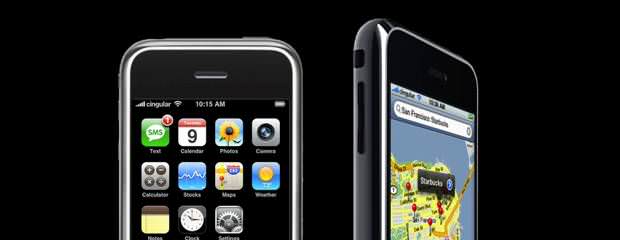
Apple`s Mac Line: 10 Flaws the Company Needs to Fix
Apple has established itself as the benchmark in the hardware industry. The company's products are viewed simply as the best of the best, and all other competitors, like Dell, Samsung and Hewlett-Packard, are left to hope that they can in the end catch up. All the during, even though, those who in fact buy Apple's products and use them, realize that there are some major flaws that must be overcome. That's especially true in Apple's Mac line, where the company is offering everything from its formerly high-powered Mac Pro to a Retina display-equipped MacBook Pro. Even the Mac Mini nevertheless sits on store shelves and delivers what many believe is a too-underpowered experience for the price. Whatever the case, there are several flaws in Apple's Mac line. And perhaps it's time for Apple to start fixing what's wrong. With that in mind, here's a look at what flaws are impacting Apple's Mac line, and how the company should address them sooner or rather than later. This is not only for Apple's good, nevertheless for the good of its clients.
Apple has brought 4G Long-Term Evolution service to its new iPad, and chances are, the wireless research will be coming to the iPhone 5 when that launches later this year. Why isn't the company doing the same with its MacBook Pro line? Mobile connectivity is the future. Apple should know that.
It was nice to see Apple bring its Retina display to a new 15-inch MacBook Pro. But, the company shouldn't have stopped there. Its Retina display has quickly become one of its most important advantages, and to not deliver it in its entire line is a mistake.
The Mac Pro has been floundering on store shelves for the last two years. Owners are wondering when the company will after all update it. In short far, Apple has stayed tight-lipped. Things have gotten so bad that a growing petition has erupted on Facebook. Come on, Apple. Where's the new Mac Pro?
The Mac Mini is a unequalled offering in today's computing space. The device doesn't come with a monitor, keyboard or mouse, and is designed for simple use. Its price tag reflects that. Nevertheless it's about time Apple updates its specs and makes it a bit more powerful. The Mac Mini could be Apple's Trojan Horse for attracting mainstream users on a budget. It should try to attract them more to that product.
Although Apple offered up the 15-inch MacBook Pro with Retina display at the Worldwide Developers Conference, the company as well decided to discontinue the 17-inch model. That was a mistake. The 17-inch MacBook Pro was perfect for the enterprise. And it should make a comeback.
For years now, we've been looking at the same MacBook Pro design, the same iMac design, and even the same Mac Pro look. Isn't it about time for Apple to unveil some new designs across its Mac line? The aluminum finish is nice and all, nevertheless we want to see something new.
Following that, it would be nice if Apple delivered the level of thinness found in its MacBook Air to all its MacBook Pros. Yes, the new MacBook Pro with Retina display is quite thin, measuring just 0.71 inches, nevertheless that's not enough. We need thinner MacBook Pros in the short run.
The Mac line is very expensive
The Mac line is very expensive. From the Mac Mini to the Mac Pro, consumers will find that they're paying a significant premium just to get their hands on products that match cheaper alternatives on the Windows side. Now that Apple is attracting more mainstream consumers, like as not it's time for the company to consider price cuts.
One of the nice things about flash storage is that it allows for quick access to files and with no moving parts, can significantly cut down on the chances of losing all of your information. At this hour, flash is somewhat expensive, nevertheless considering Apple's products are already not so cheap, wouldn't it be nice if all of its Macs came with flash?
Apple's iMac is stuck at 27 inches. And though that's not so bad, it would have been nice if they came with 30-inch screens or more. Apple's iMacs are quickly becoming both family computers and another entertainment option when the television is taken. Consequently, a larger screen would only make sense.
- · Rackspace debuts OpenStack cloud servers
- · America's broadband adoption challenges
- · EPAM Systems Leverages the Cloud to Enhance Its Global Delivery Model With Nimbula Director
- · Telcom & Data intros emergency VOIP phones
- · Lorton Data Announces Partnership with Krengeltech Through A-Qua⢠Integration into DocuMailer
